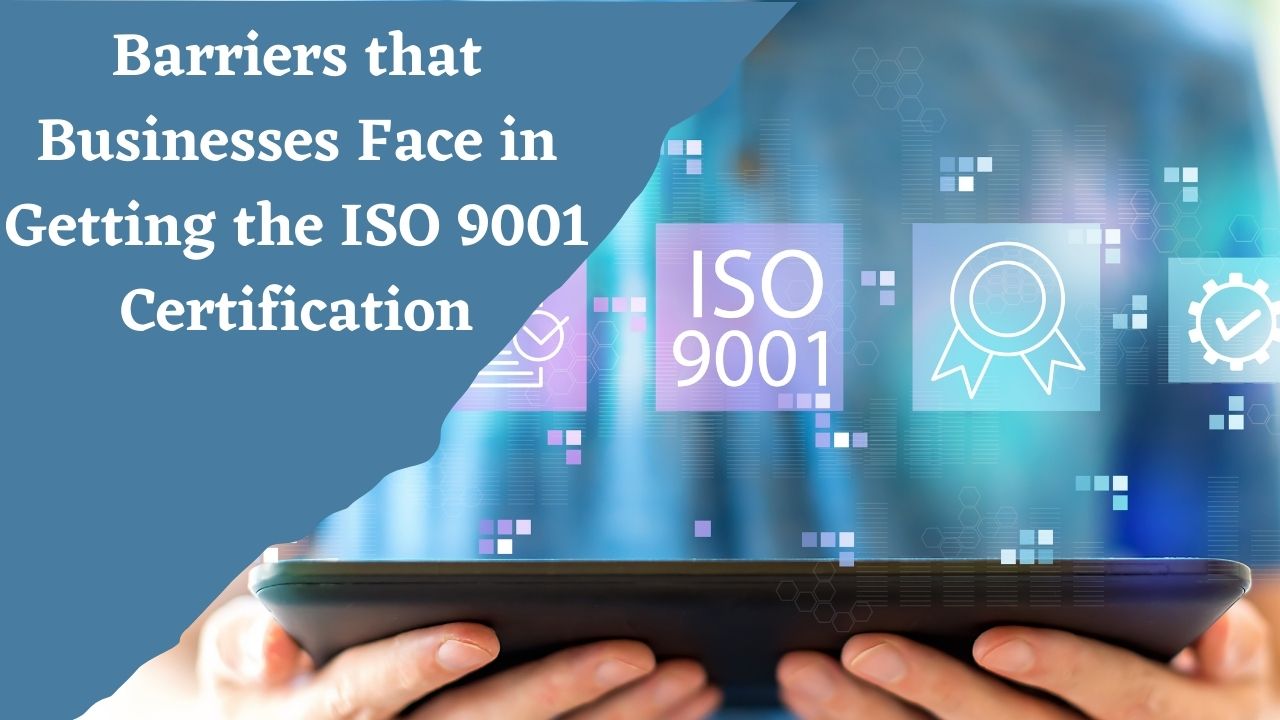This article sums up the challenges or barriers that most organizations may face while getting their Quality Management System (QMS) certified with the ISO 9001 standard.

Organizations need to prioritize quality management in order to make sure that they have an ever-growing customer base with all customers fully satisfied with their products or services. The key to maintaining customer satisfaction consistently is the implementation of a robust QMS (Quality Management System). It works as a comprehensive framework taking care of all the aspects and activities of your business. However, the QMS can be ineffective if you do not know the appropriate guidelines and requirements for implementing it. Getting the ISO 9001 certification can help in making your QMS effective.
As the top-level international standard for quality management, it provides all crucial regulations and requirements to develop and implement the QMS. Therefore, having such an internationally recognized QMS ensures superior quality products or services which keeps your customers satisfied and helps to retain them. However, no good thing comes without challenges in a business. There are many challenges that can make your journey of implementing an integral QMS difficult and certificating even more challenging. This article discusses some of the common barriers that any organization can face in their journey of QMS certification.
5 Top Challenges in Getting the ISO 9001 Certification for Your QMS
Complex Documentation
The ISO 9001 certification requires your business to maintain all documentation of your work procedures, instructions to employees and practices of the QMS. Therefore, the management team may feel the burden of extra paperwork and find it difficult to organize it all so that documents are accessible to the right members at the right time.
The challenge of documentation can be easily dealt with if the management team understands the need for documentation. It is meant to make the operations and QMS practices a lot easier for everyone. Besides, employees can be more efficient in their roles when they have proper work instructions in hand.
ISO 9001 Guidelines are too Regulatory
Organizations may find it a challenge to have a QMS implemented according to the ISO 9001 guidelines because they feel that the guidelines are too restrictive. They think that the QMS will limit the scope of their business and hence they may not improve their quality over time. Employees may also feel that regulations in their work procedures bring too much rigidity in their job roles which may make them less motivated.
It is important to realize that stringent regulations of ISO 9001 may look restrictive, but they help in providing security and consistency to the quality of your products/services. ISO 9001 is helpful due to the evolving circumstances in the market, volatility in competition, and ever-changing customer expectations.
Lack of Motivation
Many employees might feel pressure from the higher management to have their QMS implemented and operated by adhering to the ISO 9001 regulations. The direct power and direction of the management in operating the QMS can cause tension in the teams and can result in loss of motivation.
The only way to get over this challenge is to keep the leaders of different teams on the management board. In this way, employees can directly become a part of the procedures and decision making of the QMS. When they are the ones to work with the QMS, they should be allowed to voice their opinions and state any issues that they face while working with it. Thus, the team leaders can directly convey their views to the higher management.
Managing the Resources and Costs
To make your QMS properly implemented and certified, you need to have the required resources and be able to pay all the required costs. Funds are needed for running the formal procedures of the ISO certification such as preparation of the documents, training staff, conducting reviews and internal audits, and finally getting certified from a reputed body.
The effective way to collect and manage resources for the implementation is by planning ahead. The implementation process must be defined through a checklist, where each step must be detailed clearly along with the resources needed. It is best if the higher management takes the lead in the implementation project with the consultation of an ISO 9001 expert team. They can guide you through the implementation and formal documentation of the QMS while ensuring its compliance with the ISO 9001 requirements. You need to choose the most responsible and potential members to take part in the implementation process who understand your organization’s objective for getting the certification well and can provide maximum effort to achieve it.
Key Takeaway
There is magic way to implement the QMS and get it certified. Starting with determining the scope of the QMS, document management, ensuring leadership in the implementation process, and involving every member of the organization, the ISO 9001 certification is full of challenges. However, no challenge too big to be overcome. You need thoughtful planning and steadfast management that fully recognizes the role of employees and ensures their participation in the certification process.
Damon Anderson is the owner of a reputed ISO certification organization that guides and assists organizations in multiple industries or fields to get certified with the ISO 9001 certification and other quality assurance certifications. He is also a passionate writer and likes to write articles on the QMS, as he is a specialized consultant for ISO 9001.
Contact Details:
Business Name: Compliancehelp Consulting, LLC
Email Id: info@quality-assurance.com
Phone No: 877 238 5855
Post new comment
Please Register or Login to post new comment.